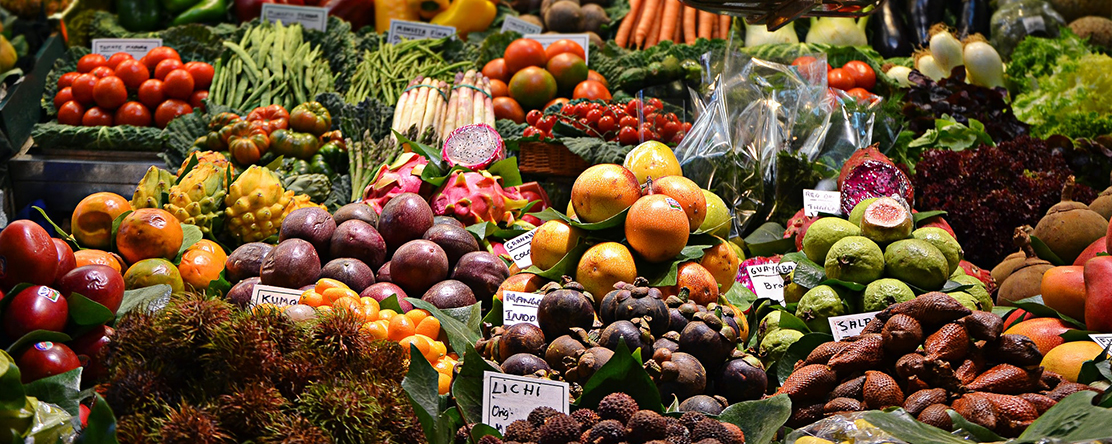
In the News
SNAP-Ed Is Helping U.S. Families Make Healthier Choices, Study Shows
-
Focus Areas
Chronic Disease Prevention -
Issues
Nutrition & Food Security -
Expertise
Research – Quantitative -
Programs
Center for Wellness and Nutrition

Federal nutrition education programs have improved healthy habits among Americans in the U.S. Southeast, according to researchers at the Public Health Institute. Their recent study aggregated feedback from families and adults who participated in Supplemental Nutrition Assistance Program-Education (SNAP-Ed) in 2017.
The federally-funded Supplemental Nutrition Assistance Program (SNAP) provides food-purchasing support for low-income Americans. SNAP also offers nutrition education programs, known as SNAP-Ed. The goal of SNAP-Ed is to help individuals with limited budgets follow healthy diets based on the U.S. Dietary Guidelines.
SNAP-Ed has two components. The first is direct nutrition education, which includes social media tips and cooking classes. The second focuses on long-term policy, system, and environmental (PSE) changes, like stocking vending machines with healthier snacks or banning soda in schools.
“[SNAP] is very customized by each state to meet the needs of their local communities,” Amy DeLisio—Director of the Public Health’s Center for Wellness and Nutrition (CWN) and a co-author of the study—tells Food Tank. Her team chose to focus their study in the U.S. Southeast because the region has some of the lowest rates of fruit and vegetable consumption, and the highest rates of obesity.
To assess the efficacy of SNAP-Ed across the region, researchers had to design an evaluation template malleable enough to meet the needs of different SNAP agencies. They then pooled data from 25 agencies across eight states: Alabama, Florida, Georgia, Kentucky, Mississippi, North Carolina, South Carolina, and Tennessee.
“We were very excited to see—when the data came in and it was analyzed—significant changes in a lot of behaviors… to see fruit and vegetable consumption go up, as well as over 700 policy, system, and environmental change supports implemented across the region,” DeLisio says. “It was also really exciting to see that people were implementing multi-level interventions and they were having an impact on their population.”
The study finds that, after SNAP-Ed intervention, participants are significantly more likely to consume more than one kind of fruit and one kind of vegetable each day. They also consume an additional one-third cup of fruit and one-quarter cup of vegetables. Additionally, researchers find that SNAP-Ed recipients are more likely to frequently drink water, drink fewer sugary beverages, and more low- or no-fat milk.
SNAP-Ed participants also demonstrated improved shopping habits. The study finds they are more likely to choose healthy foods, read nutrition facts, not run out of food before the month’s end, compare prices, and shop with a grocery list.
The study calculates that in 2017, SNAP-Ed agencies in the Southeast implemented more than 700 PSE changes, which reached over 830,000 people. These changes include increasing the availability of fresh produce, prioritizing farm-to-table foods, creating edible gardens, and adopting healthier school wellness policies.

You can reach a whole community—people that may have never thought about coming to your nutrition class—they may shop at that store and their kids may go to that school, and they will be influenced hopefully by the changes that they’re seeing. I feel best practice is when community residents are engaged in that process to ensure we’re meeting their needs. If we are giving them recipes with food they don’t eat, that is not going to be helpful… People that are closest to the problem often have the most viable solutions to make their communities healthier.Amy DeLisio, director of the Center for Wellness and Nutrition
Click below to read the full article in Food Tank.
Originally published by Food Tank
More Updates
Work With Us
You change the world. We do the rest. Explore fiscal sponsorship at PHI.
Support Us
Together, we can accelerate our response to public health’s most critical issues.
Find Employment
Begin your career at the Public Health Institute.



